Moira Butterfield's Blog, page 68
September 7, 2014
Wedding readings from children's books by Abie Longstaff
You'll all have to forgive me digressing from serious book-writing issues: it's time for a little romance! (well, I do write fairy tale stories.)

I got married a couple of months ago (yay!)
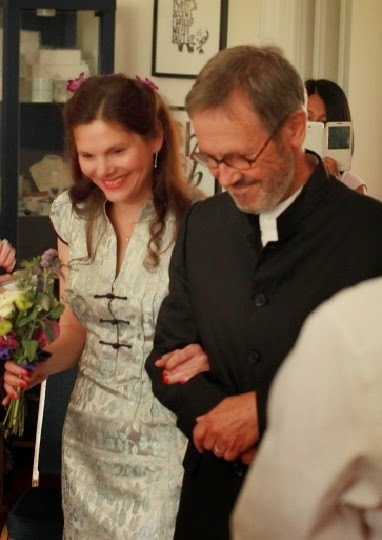 Walking down the aisle with my dadOf course, being a children's author, I wanted to find a good reading from a book to use in the ceremony. So, I took to the net and the library for research. Here is a list of my top favourites:
Walking down the aisle with my dadOf course, being a children's author, I wanted to find a good reading from a book to use in the ceremony. So, I took to the net and the library for research. Here is a list of my top favourites:From 'Oh the Places You'll go' by Dr Seuss
Congratulations!
Today is your day.
You're off to Great Places!
You're off and away!
You have brains in your head.
You have feet in your shoes
You can steer yourself
any direction you choose.
You're on your own. And you know what you know.
And YOU are the guys who'll decide where to go.
OH!
THE PLACES YOU'LL GO!
You'll be on your way up!
You'll be seeing great sights!
You'll join the high fliers
who soar to high heights.
You won't lag behind, because you'll have the speed.
You'll pass the whole gang and you'll soon take the lead.Wherever you fly, you'll be the best of the best.
Wherever you go, you will top all the rest.
From ‘The Velveteen Rabbit’ by Margery Williams“Real isn't how you are made,' said the Skin Horse. 'It's a thing that happens to you. When a child loves you for a long, long time, not just to play with, but REALLY loves you, then you become Real.'
'Does it hurt?' asked the Rabbit.
'Sometimes,' said the Skin Horse, for he was always truthful. 'When you are Real you don't mind being hurt.'
'Does it happen all at once, like being wound up,' he asked, 'or bit by bit?'
'It doesn't happen all at once,' said the Skin Horse. 'You become. It takes a long time. That's why it doesn't happen often to people who break easily, or have sharp edges, or who have to be carefully kept. Generally, by the time you are Real, most of your hair has been loved off, and your eyes drop out and you get loose in the joints and very shabby. But these things don't matter at all, because once you are Real you can't be ugly, except to people who don't understand.”
From ‘The House at Pooh Corner’ by A.A. Milne “Pooh” whispered Piglet.
“Yes, Piglet” replied Pooh.
“Nothing,” answered Piglet,
“I just wanted to be sure of you.”
“If you live to be a hundred, I want to live to be a hundred minus one day, so I never have to live without you.”
“It’s so much more friendly with two.”
“Pooh, promise me you won’t forget about me, ever. Not even when I am a hundred.”
Pooh thought for a little.
“How old shall I be then?”
“Ninety-nine.”
Pooh nodded. “I promise,” he said.
“Some people care too much, I think it’s called love.”
From ‘The Amber Spyglass’ by Philip Pullman
"I will love you forever; whatever happens. Till I die and after I die, and when I find my way out of the land of the dead, I’ll drift about forever, all my atoms, till I find you again… I’ll be looking for you, every moment, every single moment. And when we do find each other again, we’ll cling together so tight that nothing and no one’ll ever tear us apart. Every atom of me and every atom of you… We’ll live in birds and flowers and dragonflies and pine trees and in clouds and in those little specks of light you see floating in sunbeams… And when they use our atoms to make new lives, they won’t just be able to take one, they’ll have to take two, one of you and one of me, we’ll be joined so tight…”
We also liked The Owl and the Pussycat by Edward Lear.
But, in the end we chose this extract from The Little Prince, by Antoine de Saint Exupery:
'And the fox said to the Prince:
"To me, you are still nothing more than a little boy who is just like a hundred thousand other little boys. And I have no need of you. And you, on your part, have no need of me. To you, I am nothing more than a fox like a hundred thousand other foxes. But if you tame me, then we shall need each other. To me, you will be unique in all the world. To you, I shall be unique in all the world … if you tame me, it will be as if the sun came to shine on my life. I shall know the sound of a step that will be different from all the others. Other steps send me hurrying back underneath the ground. Yours will call me, like music, out of my burrow. And then look: you see the grain-fields down yonder? I do not eat bread. Wheat is of no use to me. The wheat fields have nothing to say to me. And that is sad. But you have hair that is the color of gold. Think how wonderful that will be when you have tamed me! The grain, which is also golden, will bring me back the thought of you. And I shall love to listen to the wind in the wheat . . ."
The fox gazed at the little prince, for a long time.'
 Me with my 5 sisters I'd love to hear more suggestions for children's book readings for weddings or funerals or other big events :)
Me with my 5 sisters I'd love to hear more suggestions for children's book readings for weddings or funerals or other big events :)
Published on September 07, 2014 00:32
September 1, 2014
10 Top Tips for Great Virtual Author Visits
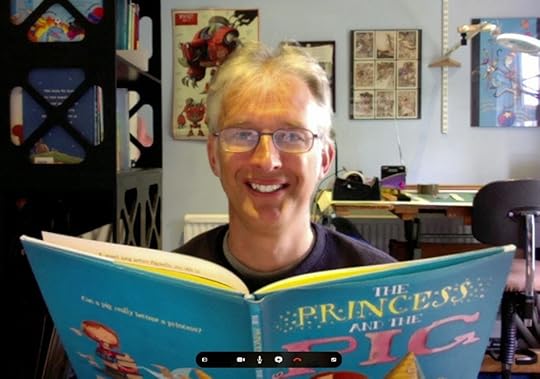 Are you Skyping comfortably? Then I'll begin.
Are you Skyping comfortably? Then I'll begin.A couple of years ago two school children in North Carolina emailed me to ask if I’d make a Skype visit to their elementary class. The class had read my picture book The Princess and the Pig and wanted to ask me some questions about it. I’d been thinking about offering Skype visits for some time, so I agreed. The visit went really well. I read the book to the children who had prepared some great questions to ask me afterwards. The visit had been very quick and easy to arrange and although I’d only spent half an hour talking to the children it was obvious they'd become very enthusiastic about my books as a result.
Skype author visits are very popular in the US with many US children’s authors offering short virtual visits for free as well as longer visits for a fee. It seemed like a great way to connect with young readers both in the UK and beyond, so in June last year I started offering a limited number of free Skype school visits through my web site.
 One of my virtual visits to a school in Wisconsin
One of my virtual visits to a school in WisconsinI did my twentieth virtual visit last term and already have another five lined up for this autumn. Some of the schools I've visited have not had an author visit of any kind before and every school has been very appreciative. Teachers often follow up with classroom activities and schools have sent me letters, drawings and even an ebook the children created in response to my visit.
 virtualauthors.co.ukAlthough the technology is in place, virtual visits don’t seem to have caught on in the UK in the way they have in the US and only three of my virtual visits have been to UK schools. I think their popularity in the US is partly due to web sites such as the Skype an Author Network and Kate Messner's “Authors who Skype” web page which lists authors offering free Skype visits to US schools. So in March this year I set up virtualauthors.co.uk a directory of UK authors and illustrators offering free 15-20 minute Skype visits to UK schools.
virtualauthors.co.ukAlthough the technology is in place, virtual visits don’t seem to have caught on in the UK in the way they have in the US and only three of my virtual visits have been to UK schools. I think their popularity in the US is partly due to web sites such as the Skype an Author Network and Kate Messner's “Authors who Skype” web page which lists authors offering free Skype visits to US schools. So in March this year I set up virtualauthors.co.uk a directory of UK authors and illustrators offering free 15-20 minute Skype visits to UK schools.The Virtual Authors site includes a page of advice for authors and illustrators on how to set up virtual visits, but I thought I’d offer some further advice on this blog. So here are 10 top tips for great virtual author visits.
Arranging the visit
 My virtual visits page1: Set up a web page for your virtual visitsSince I don't charge for my virtual visits, I like to keep the admin time to an absolute minimum and most of my visits are arranged with one or two short emails. The virtual visits page on my web site attempts to answer all the questions that schools might want to ask such as ‘how long does a visit last?’ or ‘is there a minimum group size?’. There’s also a booking table showing which dates are currently available. If this information wasn’t on the site I’d have to spend time responding to these questions by email. Similarly, you can ask schools to email you their visit requests, but a visit request web form with ‘required’ fields is a good way to ensure that schools provide you with all the information you need in one go.
My virtual visits page1: Set up a web page for your virtual visitsSince I don't charge for my virtual visits, I like to keep the admin time to an absolute minimum and most of my visits are arranged with one or two short emails. The virtual visits page on my web site attempts to answer all the questions that schools might want to ask such as ‘how long does a visit last?’ or ‘is there a minimum group size?’. There’s also a booking table showing which dates are currently available. If this information wasn’t on the site I’d have to spend time responding to these questions by email. Similarly, you can ask schools to email you their visit requests, but a visit request web form with ‘required’ fields is a good way to ensure that schools provide you with all the information you need in one go.2. Confirm the school’s Skype-name in advanceOne of details you need to get from the school is their Skype-name. Teachers sometimes get this wrong, so it’s worth making sure you have the correct Skypename by sending a “contact request” via Skype in advance of the visit. I usually do this as soon as I receive the booking request to get it out the way. Ask the school (via email) to make sure that they accept the contact request and then check that they've done so a couple of days before the visit. This eliminates any problems with making contact on the day.
Five minutes before the visit
3. Make sure you'll be presentable and in frameOn a real school visit, if you have spinach in your teeth or your flies are unzipped, someone will probably point this out to you before you appear in front of a room full of children. The first time anyone will see you on a virtual visit is when you appear on the screen, so take a quick look in the mirror to check that your hair’s not sticking up at an outrageous angle or make sure you haven’t got toothpaste smeared across your chin – unless that’s the look you’re going for!
You might also want to check that your webcam is angled so that the children can see your whole face and not just the top or bottom of your head! You can check how you'll appear on your webcam by using the preview window in Skype's preferences. On a Mac, click on Skype on the menu bar, then Preferences > Audio/Visual. On a PC, click Call > Video > Video Settings.
 Don't look like you've just crawled out of bed and check that your face is well-framed.
Don't look like you've just crawled out of bed and check that your face is well-framed.4: Be seen in the right lightYou don’t want the children to see you as a sinister silhouette, so make sure your face is adequately lit when you’re on camera. If you're Skyping during daylight hours, dalight from a window will often provide the best lighting. If you’re using a Mac or a PC with a large screen to Skype, bear in mind that the screen itself is a light source. If the desktop on your computer is bright green and there’s not much light coming from your surroundings, your face may be bathed in sickly green light. This might be perfect if you’re reading a horror story, but if you're not then a neutral-coloured desktop (or a blank white document) behind your Skype window will illuminate your features without a colour cast.
 Unless you're deliberately going for sinister, make sure you're seen in a good light.
Unless you're deliberately going for sinister, make sure you're seen in a good light.5. Take the phone off the hookYou don’t want anything distracting you while you talk to the children, so five minutes before the visit take your landline off the hook and switch your mobile to silent. You might also consider quitting or turning off any alert sounds for your email and Twitter accounts.
 Eliminate any distractions before you Skype
Eliminate any distractions before you Skype6. Know who you're talking toEven though it’s a virtual visit, you want it to feel as personal as possible. So if like me you’re not very good at remembering names, write the name of the teacher, the class or year group, the school and the school’s location on a small piece of paper and stick it right next to the camera where you’ll be able to read it without looking away from the screen.
 Some tips on how to set up your screen
Some tips on how to set up your screenDuring the visit
7. Look at the camera – not the screenOne of the things that can make Skype conversations feel less real than face to face conversations is a lack of eye contact. Skype users tend to look at the other person’s face on the screen rather than straight into the camera. Most authors will be using a webcam that’s built in to their laptop or desktop PC. It’s tempting to make the Skype window full screen so that you get a bigger image of the children, but if you have a large screen it’s worth keeping the Skype window relatively small and right next to the camera (see screen photo above). That way you can see the the whole class while keeping your eyes close to the camera, which will look a lot more natural from the children’s point of view. When I’m reading a picture book, I try to look straight into the camera for most of the time so that the children will feel I am reading directly to them.
 Try to look straight at the camera when you're speaking to the children
Try to look straight at the camera when you're speaking to the children8. Don’t shoutTry to speak at a natural volume. If you find yourself shouting without meaning to, it may be because you have the speaker volume set too low on your computer; the children sound quiet so you subconsciously raise your own voice to compensate for the apparent poor connection. Similarly if you’re Skyping to a large hall full of children there’s no need to raise your voice so that they can hear you at the back (as you'd do if you were there in person). If your audience can’t hear you, the teacher can turn up the volume at the school's end.
9. Ask the teacher to prompt the children's questionsMy Skype sessions usually include a question and answer session. On my actual school visits I can select which children ask questions by pointing at them myself. This isn’t practical on a virtual visit as the class can’t accurately judge who you’re pointing at from your screen image. An easy way around this problem is to ask a teacher to pick and prompt each questioner in turn.
10: Take advantage of being at homeA virtual visit is no substitute for a real school visit, but speaking to the children from home does have some advantages. For instance, if you’re able to move your camera around, you can give the children a guided tour of your office. I only take a small selection of my books on my actual school visits, but on a virtual visit I have them all at hand. So If a child asks me about the first book I ever wrote or my favourite picture book by another author, I can take a copy from my bookshelf and show it to them!
 Show don't tell!
Show don't tell!I hope this post has made some of you – authors and teachers – want to give virtual school visits a try. If you're already an experienced virtual visitor and have any tips of your own, I’d love to hear them, so please post them in the comments below!
And If you’re a traditionally published author or illustrator that would like to be listed on virtualauthors.co.uk, please fill out the form on this page. Most of the authors that are currently listed on the site write for older children, so it would be great to have a few more picture book authors and illustrators.
Find out more about Jonathan Emmett and his books at his Scribble Street web site or his blog.You can also follow Jonathan on twitter @scribblestreet.
Published on September 01, 2014 23:30
August 28, 2014
M-O-T-O-R-C-Y-C-L-E: Thoughts on SOUND Effects in Picture Books by Laura Sassi (Guest Blog)
 What's the noise of a motorcycle?!A few years ago, my husband and I were eating a lovely supper with our son, age three, when one of us, who shall remain nameless, passed some extremely audible gas. Before anyone had a chance to be mortified, my son squealed with delight: “M-O-T-O-R-C-Y-C-L-E!” I share this because it’s a perfect example of the magical effect sounds have on young readers. They’re so mesmerized by sounds that, even when sounds aren’t emitted naturally (as above), they create their own. Eavesdrop on any small child playing and quite often you’ll hear the putt-putt of imaginary cars, the whoosh of imaginary jets, or the tippa-tap of invisible fairy wands.
What's the noise of a motorcycle?!A few years ago, my husband and I were eating a lovely supper with our son, age three, when one of us, who shall remain nameless, passed some extremely audible gas. Before anyone had a chance to be mortified, my son squealed with delight: “M-O-T-O-R-C-Y-C-L-E!” I share this because it’s a perfect example of the magical effect sounds have on young readers. They’re so mesmerized by sounds that, even when sounds aren’t emitted naturally (as above), they create their own. Eavesdrop on any small child playing and quite often you’ll hear the putt-putt of imaginary cars, the whoosh of imaginary jets, or the tippa-tap of invisible fairy wands.As writers for the very young, we can enhance our stories by tapping into this intrinsic love and infusing our texts with sound words. Technically called 'onomatopoeia', sound words can add richness to any writing, but especially to picture books. Indeed, one of my intentions in writing my debut picture book, GOODNIGHT, ARK was to infuse it with as many ear-pleasing sound words as possible. Thus the hail in my story goes pop pop and ping ping and the lightning flashes with a zip and a zing. The wind goes whoosh and the sheep baah as they dash into Noah’s bed.
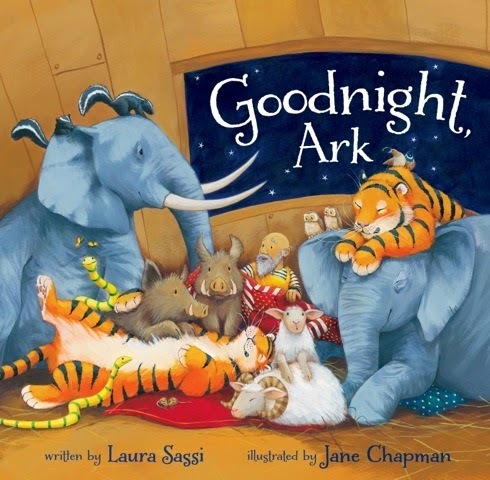 Goodnight, Ark by Laura Sassi, illustrated by Jane Chapman,Zonderkidz (2014)I’m so keen for sound words that when no perfect translation exists, I come up with my own. Here are some examples of ear-pleasing phrases I’ve concocted to capture special moments. See if you can guess what they are. Answers at end of post. NO PEEKING!:
Goodnight, Ark by Laura Sassi, illustrated by Jane Chapman,Zonderkidz (2014)I’m so keen for sound words that when no perfect translation exists, I come up with my own. Here are some examples of ear-pleasing phrases I’ve concocted to capture special moments. See if you can guess what they are. Answers at end of post. NO PEEKING!: A. Vroom! Pt! Ptta! Clack!
B. Flump-flump! Flurp-flurp!
C. Sloggle, sloggle…
 Here's another idea for sounds. Are you a collector? You know, the sort who collects shells, or bottle caps, or little toy cars (as my son used to)? Yes? Then perhaps you’d like to join me in a challenge. This week, with ear-pleasing wordplay in mind, I plan to collect sounds as I go about my day and then translate them into creative sound words for possible use in a future picture book or poem. I’ll be collecting my words in my writing journal, but any repository will do.
Here's another idea for sounds. Are you a collector? You know, the sort who collects shells, or bottle caps, or little toy cars (as my son used to)? Yes? Then perhaps you’d like to join me in a challenge. This week, with ear-pleasing wordplay in mind, I plan to collect sounds as I go about my day and then translate them into creative sound words for possible use in a future picture book or poem. I’ll be collecting my words in my writing journal, but any repository will do.Need a little inspiration to get you started? Here are two great examples of picture books in which the authors splendidly incorporate sound words, often made up, to add hilarity to the text.
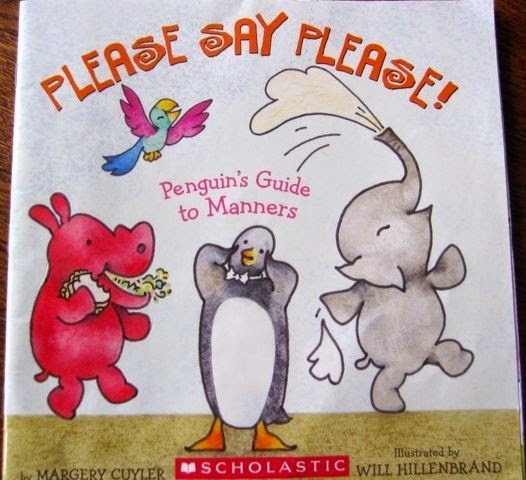 Please Say Please! (Penguin's Guide to Manners)
Please Say Please! (Penguin's Guide to Manners) by Margery Cuyler, illus by Will HillenbrandIn PLEASE SAY PLEASE! (Scholastic, 2004), author Margery Cuyler does a splendid job of infusing fun sound words into her story about a little penguin who invites his friends to dinner. Each spread depicts a humorously horrendous manner, with the more polite, preferred alternative depicted on the page turn. This book was one of my daughter’s favourites when she was little and includes sound words such as hee-hee, splat, and wheee. My daughter’s absolute favourite bit, however, involves a hearty bur-r-r-r-r-r-r-p!
 Muncha! Muncha! Muncha!
Muncha! Muncha! Muncha!by Candace Fleming, illus by G. Brian KarasCandace Fleming’s MUNCHA! MUNCHA! MUNCHA! (Atheneum/Schwartz, 2002) about three persistent rabbits trying to get into Mr McGreeley’s garden is also rich in onomatopoeia. As the story builds, Mr McGreeley takes ever more drastic measures to keep the rabbits out. Each time the rabbits outwit him, Fleming humorously celebrates their triumph with a repeating, sound-pleasing, growing refrain that begins 'Tippy-tippy -tippy, Pat!' and ends with 'Muncha! Muncha! Muncha!' In between, she adds sound words that reflect their success in overcoming the latest rabbit-thwarting barrier created by Mr McGreeley. For example, after Mr McGreeley installs a wire fence around his garden to keep out the rabbits, Fleming adds a 'Spring-hurdle, Dash! Dash! Dash!' to the interior of the refrain. Later, when Mr McGreeley builds a moat, Fleming adds a 'Dive-paddle, Splash! Splash! Splash!'
Happy sound hunting and word building all!
Laura Sassi
Answers to Onomotopoeia Challenge:
A. The sound of our vacuum cleaner picking little toy bits.
B. The sound of a little wingless chick trying to fly.
C. The slurpy sound little paws make when trying to trudge through a muddy puddle.
 Guest Blogger, Laura Sassi, has a passion for playing with words. Her picture book, GOODNIGHT, ARK, is a whimsical rhymer about bedtime on Noah’s Ark, published by Zonderkidz, a HarperCollins Company, and illustrated by Jane Chapman.
Guest Blogger, Laura Sassi, has a passion for playing with words. Her picture book, GOODNIGHT, ARK, is a whimsical rhymer about bedtime on Noah’s Ark, published by Zonderkidz, a HarperCollins Company, and illustrated by Jane Chapman.blog: http://laurasassitales.wordpress.com/
Twitter: http://laurasassitales.wordpress.com/
Facebook: https://www.facebook.com/LauraSassiTales
Blog Tour: http://laurasassitales.wordpress.com/2014/08/25/goodnight-ark-were-going-on-tour/
Published on August 28, 2014 00:00
August 23, 2014
Freelance Life - part two - The Downside - And how to handle it
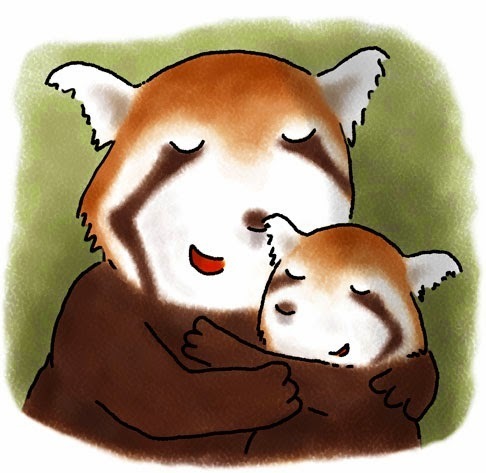
For any aspiring Picture Book writers and Artists, it might help in your struggle to know that there are many wonderful positives involved in being a successful freelance writer and/or illustrator. The affirmation and adulation ;-) (Well, not quite adulation but people saying nice things about what you do anyway). The satisfaction in knowing that you are making a half decent living doing the thing you are good at and love doing. The warm glow that comes with knowing that children all over the world have made your work part of their bedtime ritual, at least for a while. That kind of thing.
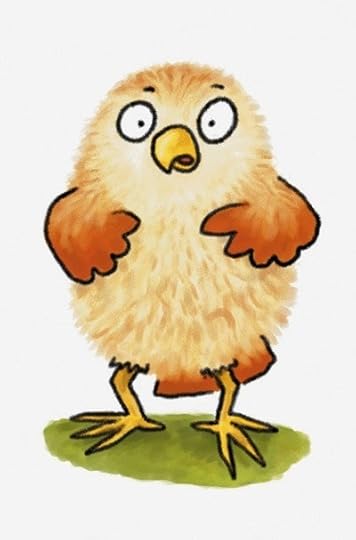
But if I may inject a word of caution, while enveloped in this happy haze it is easy to forget that the freelance writer's and illustrator's life has it's downside, and that coming up sharp against it can be a bit of shock.
You expect some tribulation on the way up as it were, but once a certain level of success has been achieved, you would be forgiven for feeling that once you have finally 'arrived', and the public like what you produce, this state of affairs is now set in stone and will continue ad nauseum. . . All you have to do is just keep it coming and all will be Hunky Dory.
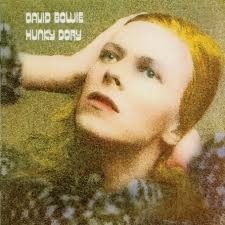 Yeah right.
Yeah right.Bubble bursting time ;-)
Sticking with David Bowie for the sake of a bad joke, you may find things drifting away from Fame and starts heading towards Low. . .
Confidence is a fragile thing. Not so much self confidence, speaking personally anyway. I always assume, rightly or wrongly, that I will be able to come up with the goods, but confidence that what you produce will be what anybody actually wants is a fragile thing. I always say that an artist's best attitude, psychologically, towards the opinions of other's and towards possible rejection, is to assume that everybody else is wrong. "The fools don't understand my art!" kind of thing. This sounds arrogant and possibly delusional, but it keeps your self belief intact.
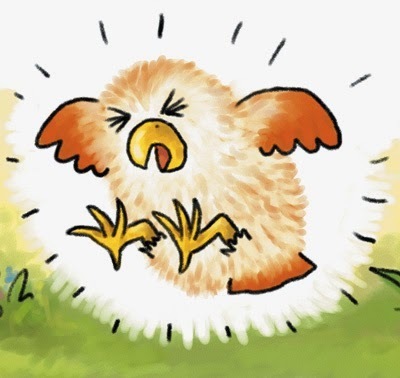
The alternative position - vis - "Oh God, I must be totally crap!" isn't useful in any way. It's not going to help you persevere with your endeavors. And you need to persevere. It's bloody hard. Strong self belief helps, justified or not.
The more alert amongst you might have detected a personal note in all this speculation about rejection and downsides. Well done ;-) yes, I am in the middle of what can be called 'A fallow period". Ideas rejected right left and centre, inspiration at an all time low. All that stuff. Not much fun.
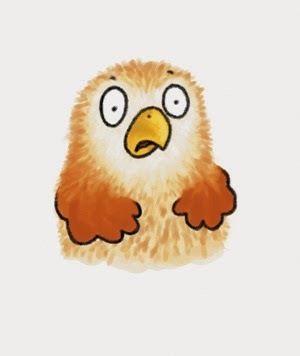 For those who have never been there, you need to be aware that it is all too easy to get into a bit of a downward spiral. It's all connected you see, rejection hits confidence, saps morale and engenders negative thoughts like, "If nobody likes what I think up, why should I bother?", and "Why should I send this idea in? It'll only get rejected." This is never going to help the creative process or help shore up the reserves of positivity you will need to draw on. When there is more pressure on a new idea being 'right' because a lot hangs on it getting accepted, being relaxed and funny, the way you need to be to do what you do, requires superhuman acting skills. At the time when it is most important for you to produce good stuff, you can't. Things start to feel forced. The very thing that makes you stand apart from others in your field, becomes suspect in your mind. Ideas become safer, less 'you' because the 'you' in what you do is now under critical examination and you start to feel that it may be the thing that is causing your ideas to fail. The rug is being pulled from under your feet, but by slow degrees. And in strange way, it's you that's doing the pulling. . .
For those who have never been there, you need to be aware that it is all too easy to get into a bit of a downward spiral. It's all connected you see, rejection hits confidence, saps morale and engenders negative thoughts like, "If nobody likes what I think up, why should I bother?", and "Why should I send this idea in? It'll only get rejected." This is never going to help the creative process or help shore up the reserves of positivity you will need to draw on. When there is more pressure on a new idea being 'right' because a lot hangs on it getting accepted, being relaxed and funny, the way you need to be to do what you do, requires superhuman acting skills. At the time when it is most important for you to produce good stuff, you can't. Things start to feel forced. The very thing that makes you stand apart from others in your field, becomes suspect in your mind. Ideas become safer, less 'you' because the 'you' in what you do is now under critical examination and you start to feel that it may be the thing that is causing your ideas to fail. The rug is being pulled from under your feet, but by slow degrees. And in strange way, it's you that's doing the pulling. . .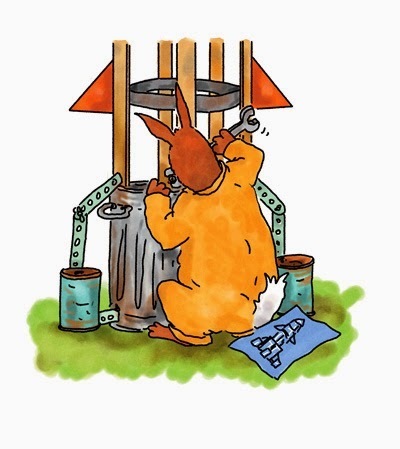
So what do you do about it? You carry on. You work through it. You analyze, and adapt if you feel it is needed. You draw on your inner strength and your faith in your own abilities, that's what.
You have to believe that it is just a passing phase, and that things will come together in due course. Though like most things, this is easier said than done.
Remember, you are in it for the long haul, and that time will take its toll. The low level anxiety and uncertainty of many years of freelancing can engender an unwelcome and unhelpful weariness sometimes. . .

But forewarned is forearmed. This kind of emotional attrition is part of the deal. If you want the good, (and the good can be very good) you have to accept the bad ;-)
But enough whingeing! Styles do go out of fashion. Editors want to create their own lists of artists and writers and not keep using the old guard ad nauseum. Of course they do and of course they should. It's the way the World works.
For my part, I comfort myself with the thought that emotional connection with your audience doesn't go out of fashion, neither does humour nor using animals as protagonists. I probably need to take some time out to draw breath and reconnect with the reason I wanted to write and draw in the first place, then return, refreshed and full of killer ideas. Ho yes.
The funny thing is, that despite the angst ridden wallowing detailed above, the second you get an idea accepted you snap out of it like it never happened. . .
Chin Up ;-)

Published on August 23, 2014 00:30
August 18, 2014
Do Hardback Children's Picture Books Lack Something? by Paeony Lewis
This blog is all about endpapers in hardback children's picture books (though you might not guess this from the first part of the blog!).
I wonder if others are like me. If I'm going to pay almost twice the price for a hardback, compared to a paperback, then I want something more than a durable cover and sturdy spine. I think many hardback children's picture books lack what I call ‘gorgeousness’. At home, I have an eclectic collection of books, and the old illustrated books often include an elusive 'gorgeousness' that makes me want to murmur, ‘my precious’. Before I look at contemporary hardback editions of children's picture books, here are some of my old books (for all ages) that include 'gorgeous' extras:
 Who can resist the spines of these Victorian fairy tales on my book shelf?
Who can resist the spines of these Victorian fairy tales on my book shelf?
 And the gilt/foil-blocked covers too
And the gilt/foil-blocked covers too
 I’ve always adored tissue paper.
I’ve always adored tissue paper.
It’s as though I’m unveiling a secret.
 Maps want to be copied. (and scrawled on - I was young)
Maps want to be copied. (and scrawled on - I was young)
 18th-century marbled endpapers want to be caressed.
18th-century marbled endpapers want to be caressed.
 Simple, attractive endpapers also add to a book, such as these by H M Brock
Simple, attractive endpapers also add to a book, such as these by H M Brock
With the growth of digital media (ebooks, picture book apps, and who knows what amazingness is around the corner), I feel 'gorgeousness' is something that publishers should capitalise on if they want us to continue buying hard copies of good books - especially hardback children's picture books. I want more!
I’d better say quickly that I’m not suggesting more book jackets. They’re an utter pain. Is it logical to put flimsy jackets on children's picture books? They just get damaged by small hands (and mouths and feet and the dog and hamster) because books are meant to be read. Mind you, an embossed cover hiding beneath a book jacket can be a lovely surprise. Even so, please forget the book jackets, or am I alone in this?
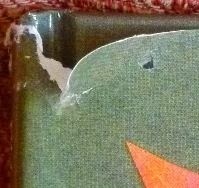
Why, oh why, are there book jackets on hardback children's picture books?
 A lovely embossed/impressed cover hiding beneath the fragile jacket
A lovely embossed/impressed cover hiding beneath the fragile jacket
So nowadays, assuming a brilliant story and captivating illustration, what adds precious gorgeousness to hardback children's picture books? Of course we want quality paper, good colour reproduction and a binding that won’t fall apart. On top of these essentials there are optional attributes such as spot varnish, embossmen, restrained foil blocking (never glitter!), or simple and stylish contemporary design. Whatever is used, I think one thing is definitely necessary: LOVELY ENDPAPERS!
NOT boring plain endpapers, or standard publisher publicity images, what I adore are illustrated endpapers. And for those not sure what I'm ranting about, endpapers (or endpages/endleaves) are double pages with one side stuck to the inside of the front or back of hardback books. They help hold the binding together and for a little more explanation I've just discovered this blog link that includes a diagram.
I’m really pleased that all my picture books have illustrated endpapers (thank you, publishers and illustrators). But there are still lovely picture books out there that only have plain endpapers, which add nothing to the experience of holding and reading a book. I won’t name publishers or books! Instead I’m going to guilt them by showing some examples of contemporary endpaper gorgeousness. I don't claim these are the best examples of endpapers, but they can all be found on my book shelves.
 No More Biscuits by Paeony Lewis, illus Brita Granstrom, (The Chicken House). I've found children enjoy looking at these endpages and pointing out their favourite biscuits.Mine are the jam sandwiches!
No More Biscuits by Paeony Lewis, illus Brita Granstrom, (The Chicken House). I've found children enjoy looking at these endpages and pointing out their favourite biscuits.Mine are the jam sandwiches!
 No More Yawning by Paeony Lewis, Illus by Brita Granstrom, (The Chicken House 2008). The childlike images on the endpages encourage children to draw their own dreams.
No More Yawning by Paeony Lewis, Illus by Brita Granstrom, (The Chicken House 2008). The childlike images on the endpages encourage children to draw their own dreams.
 Endpages don't have to be elaborate. These two are cute and simple and vary slightly between the front and back of I'll Always Love You by Paeony Lewis, illus by Penny Ives, (Little Tiger Press)
Endpages don't have to be elaborate. These two are cute and simple and vary slightly between the front and back of I'll Always Love You by Paeony Lewis, illus by Penny Ives, (Little Tiger Press)

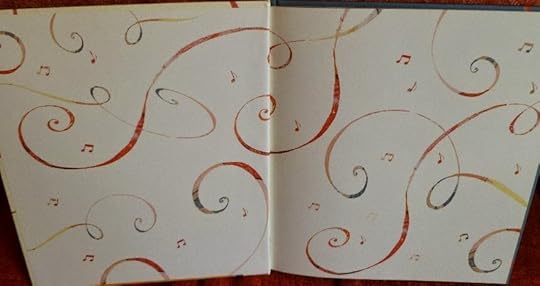
Some endpages are purely decorative and reflect the style of illustration in the book.
The Dawn Chorus by Suzanne Barton (Bloomsbury 2014) The feather-like bark of trees at night appears throughout the book and is echoed on the endpages of Owl Babies by Martin Waddell, illus by Patrick Benson (Walker Books)
The feather-like bark of trees at night appears throughout the book and is echoed on the endpages of Owl Babies by Martin Waddell, illus by Patrick Benson (Walker Books)
 This Is Not My Hat by Jon Klassen (Walker Books 2012). The attractive seaweed endpapers may look like the illustrations inside the book, but of course they're not precisely the same because that would be 'cheating'!
This Is Not My Hat by Jon Klassen (Walker Books 2012). The attractive seaweed endpapers may look like the illustrations inside the book, but of course they're not precisely the same because that would be 'cheating'!
 Endpapers at the front and back can reflect the beginning and end of the story.
Endpapers at the front and back can reflect the beginning and end of the story.
 As seen here in Dinosaur Games by David Bedford, illus by Dankerleroux (Macmillan 2011)
As seen here in Dinosaur Games by David Bedford, illus by Dankerleroux (Macmillan 2011)
 The endpapers in Best Friends or Not? by Paeony Lewis, illus by Gaby Hansen (Piccadilly Press 2008) also reflect the story arc by showing the bears apart and then together at the end (friends again)
The endpapers in Best Friends or Not? by Paeony Lewis, illus by Gaby Hansen (Piccadilly Press 2008) also reflect the story arc by showing the bears apart and then together at the end (friends again)

 Whilst some endpapers contain tiny images that are fun to study. Here are lots of pepperpots from A Pipkin of Pepper by Helen Cooper (DoubleDay 2004)
Whilst some endpapers contain tiny images that are fun to study. Here are lots of pepperpots from A Pipkin of Pepper by Helen Cooper (DoubleDay 2004)
 And items from the antique store in Grandpa for Sale by Dotti Enderle and Vicki Sansum, illus by T Kyle Gentry (Flashlight 2007)
And items from the antique store in Grandpa for Sale by Dotti Enderle and Vicki Sansum, illus by T Kyle Gentry (Flashlight 2007)
 And here is a single lone image of a large city from Maude The Not-So-Noticeable Shrimpton by Lauren Child, illus by Trisha Krauss (Puffin 2012)
And here is a single lone image of a large city from Maude The Not-So-Noticeable Shrimpton by Lauren Child, illus by Trisha Krauss (Puffin 2012)
 These endpapers are an unusual delight. They contain the names of all the children who inspired Quentin Blake to write and illustrate Un Bateau dans le Ciel (Rue du monde 2000) / Sailing Boat in the Sky (Red Fox 2003)
These endpapers are an unusual delight. They contain the names of all the children who inspired Quentin Blake to write and illustrate Un Bateau dans le Ciel (Rue du monde 2000) / Sailing Boat in the Sky (Red Fox 2003)
 Here's a close up of the names.
Here's a close up of the names.
 This Moose Belongs to Me by Oliver Jeffers (Harper Collins 2012) Have I persuaded some of you that illustrated endpapers add to a picture book? But what do illustrators think? I presume you’re not paid any extra to produce endpapers? If you’re given the opportunity to incorporate endpapers, do you relish it or sigh? Was the simplicity of the endpapers in that wonderful book This Moose Belongs to Me (Oliver Jeffers) a conscious design decision or a ‘let’s do something quickly’ decision? Personally I think it was a design decision, and a good one. Endpapers don't have to be elaborate, though I feel they should reflect the book and not be blank unless this fits best with the rest of the design and isn't just a money-saving exercise.
This Moose Belongs to Me by Oliver Jeffers (Harper Collins 2012) Have I persuaded some of you that illustrated endpapers add to a picture book? But what do illustrators think? I presume you’re not paid any extra to produce endpapers? If you’re given the opportunity to incorporate endpapers, do you relish it or sigh? Was the simplicity of the endpapers in that wonderful book This Moose Belongs to Me (Oliver Jeffers) a conscious design decision or a ‘let’s do something quickly’ decision? Personally I think it was a design decision, and a good one. Endpapers don't have to be elaborate, though I feel they should reflect the book and not be blank unless this fits best with the rest of the design and isn't just a money-saving exercise.
You might mutter that because I write books I therefore notice things like endpapers, whilst the average book buyer or child doesn’t care. Maybe, though long ago, when I hadn’t thought about writing for children, I used to share the endpapers of Farmer Duck with my children. We would compare the seasons between the front and back images. They were an integral part of the book and reflected the social change on the farm. They added something extra.

 Farmer Duck by Martin Waddell, illus by Helen Oxenbury (Walker Books)
Farmer Duck by Martin Waddell, illus by Helen Oxenbury (Walker Books)
With my children we'd study the differences between the seasons.
Sadly, the inside covers of paperback picture books are usually blank and white as they’re constructed differently. Even so, if a hardback version has endpapers then the paperback edition often includes additional pages that reproduce the endpapers, so they can still be enjoyed, albeit sometimes they're truncated.
Unfortunately, because of page number constraints in paperback editions, sometimes the original hardback endpapers don’t survive. This might be a story-length issue, or it might be something I really loathe in paperbacks: advertisements. I think that replacing the original rear endpaper with an advertisement for other books looks cheap and nasty. Does anyone else agree? Or do I need to get real to the financial and marketing implications? Mind you, has anyone ever purchased a book because they’d seen it advertised in the back of a children’s picture book (now you’re all going to say ‘yes’!). I’ll admit I look at books listed in the back of novels, but not in the back of picture books.
I wonder what others think of my plea for gorgeousness. Do you rarely buy hardbacks? Would you buy more hardbacks if they weren’t just sturdy versions of paperbacks? In particular, do illustrated endpapers add enough gorgeousness to encourage potential buyers? Does it matter? Is it just adults and not children who care? Am I merely a book snob and asking too much of publishers, illustrators and book buyers?
Paeony Lewis
www.paeonylewis.com
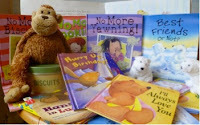
I wonder if others are like me. If I'm going to pay almost twice the price for a hardback, compared to a paperback, then I want something more than a durable cover and sturdy spine. I think many hardback children's picture books lack what I call ‘gorgeousness’. At home, I have an eclectic collection of books, and the old illustrated books often include an elusive 'gorgeousness' that makes me want to murmur, ‘my precious’. Before I look at contemporary hardback editions of children's picture books, here are some of my old books (for all ages) that include 'gorgeous' extras:
 Who can resist the spines of these Victorian fairy tales on my book shelf?
Who can resist the spines of these Victorian fairy tales on my book shelf?
 And the gilt/foil-blocked covers too
And the gilt/foil-blocked covers too I’ve always adored tissue paper.
I’ve always adored tissue paper. It’s as though I’m unveiling a secret.
 Maps want to be copied. (and scrawled on - I was young)
Maps want to be copied. (and scrawled on - I was young)
 18th-century marbled endpapers want to be caressed.
18th-century marbled endpapers want to be caressed. Simple, attractive endpapers also add to a book, such as these by H M Brock
Simple, attractive endpapers also add to a book, such as these by H M BrockWith the growth of digital media (ebooks, picture book apps, and who knows what amazingness is around the corner), I feel 'gorgeousness' is something that publishers should capitalise on if they want us to continue buying hard copies of good books - especially hardback children's picture books. I want more!
I’d better say quickly that I’m not suggesting more book jackets. They’re an utter pain. Is it logical to put flimsy jackets on children's picture books? They just get damaged by small hands (and mouths and feet and the dog and hamster) because books are meant to be read. Mind you, an embossed cover hiding beneath a book jacket can be a lovely surprise. Even so, please forget the book jackets, or am I alone in this?

Why, oh why, are there book jackets on hardback children's picture books?
 A lovely embossed/impressed cover hiding beneath the fragile jacket
A lovely embossed/impressed cover hiding beneath the fragile jacketSo nowadays, assuming a brilliant story and captivating illustration, what adds precious gorgeousness to hardback children's picture books? Of course we want quality paper, good colour reproduction and a binding that won’t fall apart. On top of these essentials there are optional attributes such as spot varnish, embossmen, restrained foil blocking (never glitter!), or simple and stylish contemporary design. Whatever is used, I think one thing is definitely necessary: LOVELY ENDPAPERS!
NOT boring plain endpapers, or standard publisher publicity images, what I adore are illustrated endpapers. And for those not sure what I'm ranting about, endpapers (or endpages/endleaves) are double pages with one side stuck to the inside of the front or back of hardback books. They help hold the binding together and for a little more explanation I've just discovered this blog link that includes a diagram.
I’m really pleased that all my picture books have illustrated endpapers (thank you, publishers and illustrators). But there are still lovely picture books out there that only have plain endpapers, which add nothing to the experience of holding and reading a book. I won’t name publishers or books! Instead I’m going to guilt them by showing some examples of contemporary endpaper gorgeousness. I don't claim these are the best examples of endpapers, but they can all be found on my book shelves.
 No More Biscuits by Paeony Lewis, illus Brita Granstrom, (The Chicken House). I've found children enjoy looking at these endpages and pointing out their favourite biscuits.Mine are the jam sandwiches!
No More Biscuits by Paeony Lewis, illus Brita Granstrom, (The Chicken House). I've found children enjoy looking at these endpages and pointing out their favourite biscuits.Mine are the jam sandwiches!
 No More Yawning by Paeony Lewis, Illus by Brita Granstrom, (The Chicken House 2008). The childlike images on the endpages encourage children to draw their own dreams.
No More Yawning by Paeony Lewis, Illus by Brita Granstrom, (The Chicken House 2008). The childlike images on the endpages encourage children to draw their own dreams.
 Endpages don't have to be elaborate. These two are cute and simple and vary slightly between the front and back of I'll Always Love You by Paeony Lewis, illus by Penny Ives, (Little Tiger Press)
Endpages don't have to be elaborate. These two are cute and simple and vary slightly between the front and back of I'll Always Love You by Paeony Lewis, illus by Penny Ives, (Little Tiger Press)


Some endpages are purely decorative and reflect the style of illustration in the book.
The Dawn Chorus by Suzanne Barton (Bloomsbury 2014)
 The feather-like bark of trees at night appears throughout the book and is echoed on the endpages of Owl Babies by Martin Waddell, illus by Patrick Benson (Walker Books)
The feather-like bark of trees at night appears throughout the book and is echoed on the endpages of Owl Babies by Martin Waddell, illus by Patrick Benson (Walker Books)
 This Is Not My Hat by Jon Klassen (Walker Books 2012). The attractive seaweed endpapers may look like the illustrations inside the book, but of course they're not precisely the same because that would be 'cheating'!
This Is Not My Hat by Jon Klassen (Walker Books 2012). The attractive seaweed endpapers may look like the illustrations inside the book, but of course they're not precisely the same because that would be 'cheating'!
 Endpapers at the front and back can reflect the beginning and end of the story.
Endpapers at the front and back can reflect the beginning and end of the story.
 As seen here in Dinosaur Games by David Bedford, illus by Dankerleroux (Macmillan 2011)
As seen here in Dinosaur Games by David Bedford, illus by Dankerleroux (Macmillan 2011)
 The endpapers in Best Friends or Not? by Paeony Lewis, illus by Gaby Hansen (Piccadilly Press 2008) also reflect the story arc by showing the bears apart and then together at the end (friends again)
The endpapers in Best Friends or Not? by Paeony Lewis, illus by Gaby Hansen (Piccadilly Press 2008) also reflect the story arc by showing the bears apart and then together at the end (friends again)
 Whilst some endpapers contain tiny images that are fun to study. Here are lots of pepperpots from A Pipkin of Pepper by Helen Cooper (DoubleDay 2004)
Whilst some endpapers contain tiny images that are fun to study. Here are lots of pepperpots from A Pipkin of Pepper by Helen Cooper (DoubleDay 2004) And items from the antique store in Grandpa for Sale by Dotti Enderle and Vicki Sansum, illus by T Kyle Gentry (Flashlight 2007)
And items from the antique store in Grandpa for Sale by Dotti Enderle and Vicki Sansum, illus by T Kyle Gentry (Flashlight 2007) And here is a single lone image of a large city from Maude The Not-So-Noticeable Shrimpton by Lauren Child, illus by Trisha Krauss (Puffin 2012)
And here is a single lone image of a large city from Maude The Not-So-Noticeable Shrimpton by Lauren Child, illus by Trisha Krauss (Puffin 2012)
 These endpapers are an unusual delight. They contain the names of all the children who inspired Quentin Blake to write and illustrate Un Bateau dans le Ciel (Rue du monde 2000) / Sailing Boat in the Sky (Red Fox 2003)
These endpapers are an unusual delight. They contain the names of all the children who inspired Quentin Blake to write and illustrate Un Bateau dans le Ciel (Rue du monde 2000) / Sailing Boat in the Sky (Red Fox 2003) Here's a close up of the names.
Here's a close up of the names.  This Moose Belongs to Me by Oliver Jeffers (Harper Collins 2012) Have I persuaded some of you that illustrated endpapers add to a picture book? But what do illustrators think? I presume you’re not paid any extra to produce endpapers? If you’re given the opportunity to incorporate endpapers, do you relish it or sigh? Was the simplicity of the endpapers in that wonderful book This Moose Belongs to Me (Oliver Jeffers) a conscious design decision or a ‘let’s do something quickly’ decision? Personally I think it was a design decision, and a good one. Endpapers don't have to be elaborate, though I feel they should reflect the book and not be blank unless this fits best with the rest of the design and isn't just a money-saving exercise.
This Moose Belongs to Me by Oliver Jeffers (Harper Collins 2012) Have I persuaded some of you that illustrated endpapers add to a picture book? But what do illustrators think? I presume you’re not paid any extra to produce endpapers? If you’re given the opportunity to incorporate endpapers, do you relish it or sigh? Was the simplicity of the endpapers in that wonderful book This Moose Belongs to Me (Oliver Jeffers) a conscious design decision or a ‘let’s do something quickly’ decision? Personally I think it was a design decision, and a good one. Endpapers don't have to be elaborate, though I feel they should reflect the book and not be blank unless this fits best with the rest of the design and isn't just a money-saving exercise.You might mutter that because I write books I therefore notice things like endpapers, whilst the average book buyer or child doesn’t care. Maybe, though long ago, when I hadn’t thought about writing for children, I used to share the endpapers of Farmer Duck with my children. We would compare the seasons between the front and back images. They were an integral part of the book and reflected the social change on the farm. They added something extra.

 Farmer Duck by Martin Waddell, illus by Helen Oxenbury (Walker Books)
Farmer Duck by Martin Waddell, illus by Helen Oxenbury (Walker Books)With my children we'd study the differences between the seasons.
Sadly, the inside covers of paperback picture books are usually blank and white as they’re constructed differently. Even so, if a hardback version has endpapers then the paperback edition often includes additional pages that reproduce the endpapers, so they can still be enjoyed, albeit sometimes they're truncated.
Unfortunately, because of page number constraints in paperback editions, sometimes the original hardback endpapers don’t survive. This might be a story-length issue, or it might be something I really loathe in paperbacks: advertisements. I think that replacing the original rear endpaper with an advertisement for other books looks cheap and nasty. Does anyone else agree? Or do I need to get real to the financial and marketing implications? Mind you, has anyone ever purchased a book because they’d seen it advertised in the back of a children’s picture book (now you’re all going to say ‘yes’!). I’ll admit I look at books listed in the back of novels, but not in the back of picture books.
I wonder what others think of my plea for gorgeousness. Do you rarely buy hardbacks? Would you buy more hardbacks if they weren’t just sturdy versions of paperbacks? In particular, do illustrated endpapers add enough gorgeousness to encourage potential buyers? Does it matter? Is it just adults and not children who care? Am I merely a book snob and asking too much of publishers, illustrators and book buyers?
Paeony Lewis
www.paeonylewis.com

Published on August 18, 2014 00:00
August 13, 2014
The House Of Illustration, by Pippa Goodhart
After twelve years of planning and fund-raising and touring exhibitions, the permanent House Of Illustration is now open in Granary Square just behind Kings Cross and St Pancras Stations, and it’s a joy.

The House of Illustration’s job is to celebrate and preserve and encourage illustration of all kinds, but with Quentin Blake as its leading light, children’s picture books and children’s fiction are of course going to feature strongly. That is especially true just now as the opening exhibition – ‘Inside Stories’ - is specifically showcasing Qunentin Blake’s archive of work, together with explanations as to how each illustrating project worked.
It’s fascinating from a children’s author’s point of view. We see Quentin Blake’s own picture book writing in draft form. Here’s just one example, taken from The Dancing Frog –
“Tell me another story about our family,” said
The name ‘Harriet’ has then been replaced with ‘Jo’. Read that line out loud with the alternative names, and it’s clear that Jo is the one that sets the rhythm right for reading out loud.We see the email that Michael Rosen sent to his publisher, proposing his very particular and personal Sad book:'hi ctoday I wrote this: I thought you might be interested?'... and then, in the text of the email, there is more or less the whole final text just written down, apparently in one day, simple and almost casual, but utterly, devastatingly, true about how he feels about the death of his son. It's a reminder that children respond, as anyone should, to honesty and truth.
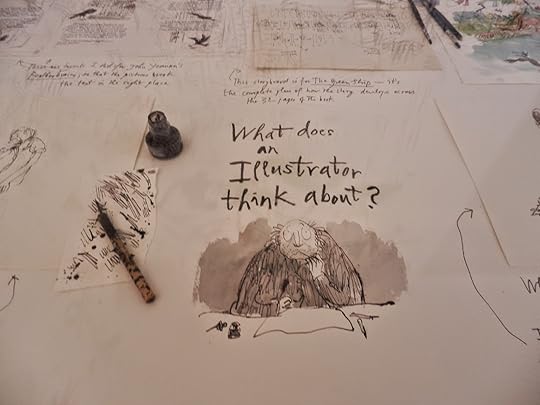
On display are developing artwork for Boy In A Dress, Danny, Champion Of The World, The BFG, The Wild Washerwomen, Captain Najork And His Hired Sportsmen, and wonderful Clown, all looking that bit brighter and more textured than they do in print. I love the early sketches and scribbly storyboards. Wonderful to see how design of a spread can animate the story action as, for example, poor Clown is flung from a series of throwing-sequence images on the left page, swooping up towards a window in a tall building on the righthand side page. That story sweeps forward with a momentum and drama that keeps us turning pages, and there’s not a word of text in sight. Of course picture books are primarily about pictures, and there’s a message for us authors in one of the comments from Quentin Blake in which he wants to ‘…celebrate the way a writer who knows how to write picture books can give the artist good opportunities.’ He's referring to John Yeoman.
This particular exhibition runs until November 2nd. But see the House Of Illustration website for up to date information – http://www.houseofillustration.org.uk/
The House of Illustration is small, but its ambitions and potential are large. Do go and enjoy it.

Published on August 13, 2014 01:34
August 7, 2014
Why you should talk to other children's authors
Moira Butterfield
A few years ago, when I’d just turned freelance, I went to a meet-up for authors and would-be-authors. It was a general local event for anyone, and there I was quickly cornered by a strangely aggressive chap who demanded to know how much money I made. That experience put me off meeting other authors for a while, which is a shame because in hindsight I realize he wasn’t even an author. He was one of those types who fancied being one because he thought he could get rich quick.Still, lacking confidence and coming from a distinctly untouchy-feelie office environment myself, I shrunk from mixing with other writers. Then I was asked to a local coffee meeting. I don’t remember why I decided to go, but I think I was probably feeling somewhat isolated. There I met some friendly folk who told me about a nationwide online children’s author group I could join. Well...It was online, so maybe I could. I could stay quiet or I could just log off if it wasn’t for me. Luckily I found a very supportive community. The authors there didn’t necessarily do the same kind of work as me but they were all writers and they led writer’s lives. I began to ask questions and get helpful answers, such as how to use Twitter or what to charge for a school visit. Eventually I met up with some of the authors in the group. I was nervous. I do a lot of work-for-hire projects in between trying to write my own material. How would that go down? I don’t have an agent. Would that be perceived as odd? No. It was OK. I found friendly supportive people prepared to share creative experiences. They’ve helped me to think about my own work and I’ve been encouraged to move forward and to write in different ways. Some of us even set up this blog. Amazing! Now I can talk to authors every day if I want to. I’ve also found myself being supportive, and that’s been a surprisingly big plus because it turns out that helping others leads to increased personal self-confidence and feelings of worth (a secret of life that I definitely did not learn in pressurized offices!). I’ve even found myself sending messages to people I’ve never met because they are going through difficult times, and though I don’t know the details (I don’t have to) I do know how very hard it is to work when life is tough, and I can say: “I understand. It's OK to take time out. Your creativity won't go away.” The other day I met a new group of children's writers near my home, and beforehand I felt that nervousness again, unsure who they’d be or what they would think of someone who might be working on a picture book one day and a history book or a first reader on another day. It turned out they were friendly, fun and wanted to hear from me. I still have those insecure feelings but I’ve found so much in common with other children’s authors. I’ve found lots of people who think rather like me. So I’d recommend meeting up with other children’s authors near you, and they don’t all have to be picture book authors. They could be writing all sorts of things for all sorts of projects, but the point is they ARE writing. Shoot the breeze, enjoy a coffee and know that you’re not alone in your working life.

http://www.moirabutterfield.com/
https://twitter.com/moiraworld Currently I'm working on both history books and picture books. I have books coming out about the Anglo-Saxons this week, aimed at schools. In the meantime I continue writing my own novel series for 8+, which I hope to finish by the 22nd Century. I definitely need a coffee!
A few years ago, when I’d just turned freelance, I went to a meet-up for authors and would-be-authors. It was a general local event for anyone, and there I was quickly cornered by a strangely aggressive chap who demanded to know how much money I made. That experience put me off meeting other authors for a while, which is a shame because in hindsight I realize he wasn’t even an author. He was one of those types who fancied being one because he thought he could get rich quick.Still, lacking confidence and coming from a distinctly untouchy-feelie office environment myself, I shrunk from mixing with other writers. Then I was asked to a local coffee meeting. I don’t remember why I decided to go, but I think I was probably feeling somewhat isolated. There I met some friendly folk who told me about a nationwide online children’s author group I could join. Well...It was online, so maybe I could. I could stay quiet or I could just log off if it wasn’t for me. Luckily I found a very supportive community. The authors there didn’t necessarily do the same kind of work as me but they were all writers and they led writer’s lives. I began to ask questions and get helpful answers, such as how to use Twitter or what to charge for a school visit. Eventually I met up with some of the authors in the group. I was nervous. I do a lot of work-for-hire projects in between trying to write my own material. How would that go down? I don’t have an agent. Would that be perceived as odd? No. It was OK. I found friendly supportive people prepared to share creative experiences. They’ve helped me to think about my own work and I’ve been encouraged to move forward and to write in different ways. Some of us even set up this blog. Amazing! Now I can talk to authors every day if I want to. I’ve also found myself being supportive, and that’s been a surprisingly big plus because it turns out that helping others leads to increased personal self-confidence and feelings of worth (a secret of life that I definitely did not learn in pressurized offices!). I’ve even found myself sending messages to people I’ve never met because they are going through difficult times, and though I don’t know the details (I don’t have to) I do know how very hard it is to work when life is tough, and I can say: “I understand. It's OK to take time out. Your creativity won't go away.” The other day I met a new group of children's writers near my home, and beforehand I felt that nervousness again, unsure who they’d be or what they would think of someone who might be working on a picture book one day and a history book or a first reader on another day. It turned out they were friendly, fun and wanted to hear from me. I still have those insecure feelings but I’ve found so much in common with other children’s authors. I’ve found lots of people who think rather like me. So I’d recommend meeting up with other children’s authors near you, and they don’t all have to be picture book authors. They could be writing all sorts of things for all sorts of projects, but the point is they ARE writing. Shoot the breeze, enjoy a coffee and know that you’re not alone in your working life.

http://www.moirabutterfield.com/
https://twitter.com/moiraworld Currently I'm working on both history books and picture books. I have books coming out about the Anglo-Saxons this week, aimed at schools. In the meantime I continue writing my own novel series for 8+, which I hope to finish by the 22nd Century. I definitely need a coffee!
Published on August 07, 2014 07:56
August 3, 2014
DON'T DO IT! - how NOT to write a picture book by Malachy Doyle
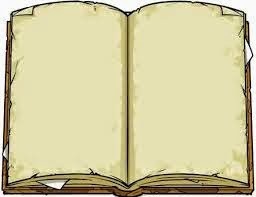
1. Don’t think it’s easy. You need to have lived. You need to have read (lots and lots). You need to have something to say. You need to have developed a voice, a style, an ease of telling…
2. Don’t over-write it. Write the story, then cut, cut, cut! Every word needs to need to be there, and the fewer the better (preferably under 500). Prune the beginning, cut to the quick, then chop, rebuild, chop, rebuild, chop, chop, chop till it’s perfect.

3. Don’t describe stuff. Just tell the story – the speech and the action. The illustrator will add colour to your world, and depth to your characters and their story.
5. Don’t illustrate it, unless you’re an illustrator (and a very good one, at that).
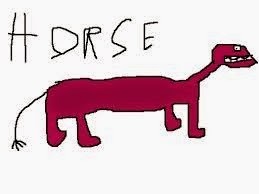 6. Don’t ask someone else to illustrate it for you, either. The publisher will find the right person.
6. Don’t ask someone else to illustrate it for you, either. The publisher will find the right person.7. Don’t tell the illustrator how to do their job. You wouldn’t want them telling you how to write it.

9. Don’t rhyme, unless the story steadfastly refuses to be told any other way. And unless you’re a brilliant rhymester, with perfect scansion.
10. Don’t lose touch with children. You’re writing for the young people of now and of the future. You need to know, understand and very much like them.
11. Don’t skimp on the reading aloud. Rhythm, and a delightful ease in the telling, are key - and only reading your story aloud many many times will show if it’s perfect.

12. Don’t just write a story. Write one that needs to be told, with something real and true of yourself in it. Write with heart, from somewhere deep inside you. Write something that truly affects and enchants the reader / listener - something that matters.
13. Don’t make it too easy for your main character. Get them into trouble. Then more trouble. Then, just when you think it couldn’t get any worse...
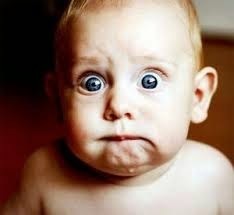
14. Don’t think it’s easy. (Didn't I say that somewhere before?) Only the best is good enough for children. The best words in the best places, the best characters in the best stories…
15. Don't expect to make a fortune. Or even a decent living. Do it because you have to. Do it because you have stories inside you demanding to be told. Write because you're a writer.
16. And don’t send a story out till it’s finished. A picture book may take months, even years, and hundreds of drafts, to get right.Ask it every question, look at it from every angle, till you’re completely satisfied with it. And then…
GOOD LUCK!
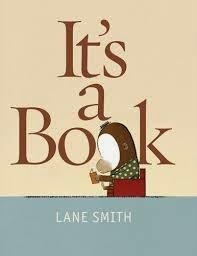
(with thanks to James and Celia Catchpole, Martin Waddell, Mem Fox and everyone else along the way…)
Malachy’s latest picture book is called Peek-a-Book, and it’s illustrated by Rowan Martin and published by Parragon Books on August 8.
His storybook Pete and the Five-a-Side Vampires is published by Firefly Press on September 18 - and the most exciting thing about this one, for Malachy, is that it’s illustrated by his daughter Hannah! Whoopy-doo!
Published on August 03, 2014 00:54
July 29, 2014
Think Globally As You Write - Lynne Garner
For the last couple of years I've taught a variety of writing courses including two eCourses on writing picture books (How To Write A Children's Picture Book and Five Picture Books In Five Weeks). So some time ago when a friend asked if it was ok to pass my details on to a local aspiring picture book author I said it would be fine. A few days later he called and opened the conversation by telling me he’d written loads of stories and wanted to get them published. He asked if any of my courses would be suitable. I went through the syllabus and asked if he felt it was what he needed. “I’m not sure,” he responded.
Silent groan!
So I asked if he knew how the publishing industry worked. “Well, um… no,” was the reply. “Then if nothing else you’ll gain a better understanding of what books make it to market and why. You can then edit your stories to suit the market, giving you a better chance.” “Oh I know my books will sell because my wife and kids love them," was his reply. Silent groan!
 I told him it doesn’t mean they would be suitable for today’s market. To make my point I told him about my mistake when submitting my first story. The story included three celebrations, these being: Easter, Guys Fawkes Night and Halloween. I continued I’d been extremely lucky that the editor who read my story liked it. She took the time to write the nicest rejection letter I’ve ever received. She pointed out that in order to sell globally I would have to think globally. Not everyone follows a Christian faith, so would not celebrate Easter. Only England celebrates a foiled plot to blow up their government, so would never have heard of Guy Fawkes Night. Finally she pointed out that not everyone celebrates Halloween and some even find it offensive. She finished by saying that if I could make a few changes she’d be pleased to read my story again. I made the changes, re-submitted and that story became 'A Book For Bramble.'
I told him it doesn’t mean they would be suitable for today’s market. To make my point I told him about my mistake when submitting my first story. The story included three celebrations, these being: Easter, Guys Fawkes Night and Halloween. I continued I’d been extremely lucky that the editor who read my story liked it. She took the time to write the nicest rejection letter I’ve ever received. She pointed out that in order to sell globally I would have to think globally. Not everyone follows a Christian faith, so would not celebrate Easter. Only England celebrates a foiled plot to blow up their government, so would never have heard of Guy Fawkes Night. Finally she pointed out that not everyone celebrates Halloween and some even find it offensive. She finished by saying that if I could make a few changes she’d be pleased to read my story again. I made the changes, re-submitted and that story became 'A Book For Bramble.'
“Oh, but I’d only submit to an English publisher,” was the reply.
Silent groan!
 I continued that gone are the days publishers only publish in their own country. In order to make a book viable the rights would be sold worldwide. My books have travelled as far as America, Australia, Indonesia, Korea and my publisher has recently sold the Hebrew rights of one of my books.
I continued that gone are the days publishers only publish in their own country. In order to make a book viable the rights would be sold worldwide. My books have travelled as far as America, Australia, Indonesia, Korea and my publisher has recently sold the Hebrew rights of one of my books.
“Oh, so you’re saying I may have to change my stories slightly.”
Silent groan!
I finished by stating that unfortunately today you have to realise we are creating a product. To get that product onto the market (published) you have to think about what the client (the publisher needs) and this product is an item that must have global appeal. So today when writing my books I always have this in mind. So if you want to give your story the best chance think global appeal.
Silent groan!
So I asked if he knew how the publishing industry worked. “Well, um… no,” was the reply. “Then if nothing else you’ll gain a better understanding of what books make it to market and why. You can then edit your stories to suit the market, giving you a better chance.” “Oh I know my books will sell because my wife and kids love them," was his reply. Silent groan!
 I told him it doesn’t mean they would be suitable for today’s market. To make my point I told him about my mistake when submitting my first story. The story included three celebrations, these being: Easter, Guys Fawkes Night and Halloween. I continued I’d been extremely lucky that the editor who read my story liked it. She took the time to write the nicest rejection letter I’ve ever received. She pointed out that in order to sell globally I would have to think globally. Not everyone follows a Christian faith, so would not celebrate Easter. Only England celebrates a foiled plot to blow up their government, so would never have heard of Guy Fawkes Night. Finally she pointed out that not everyone celebrates Halloween and some even find it offensive. She finished by saying that if I could make a few changes she’d be pleased to read my story again. I made the changes, re-submitted and that story became 'A Book For Bramble.'
I told him it doesn’t mean they would be suitable for today’s market. To make my point I told him about my mistake when submitting my first story. The story included three celebrations, these being: Easter, Guys Fawkes Night and Halloween. I continued I’d been extremely lucky that the editor who read my story liked it. She took the time to write the nicest rejection letter I’ve ever received. She pointed out that in order to sell globally I would have to think globally. Not everyone follows a Christian faith, so would not celebrate Easter. Only England celebrates a foiled plot to blow up their government, so would never have heard of Guy Fawkes Night. Finally she pointed out that not everyone celebrates Halloween and some even find it offensive. She finished by saying that if I could make a few changes she’d be pleased to read my story again. I made the changes, re-submitted and that story became 'A Book For Bramble.' “Oh, but I’d only submit to an English publisher,” was the reply.
Silent groan!
 I continued that gone are the days publishers only publish in their own country. In order to make a book viable the rights would be sold worldwide. My books have travelled as far as America, Australia, Indonesia, Korea and my publisher has recently sold the Hebrew rights of one of my books.
I continued that gone are the days publishers only publish in their own country. In order to make a book viable the rights would be sold worldwide. My books have travelled as far as America, Australia, Indonesia, Korea and my publisher has recently sold the Hebrew rights of one of my books. “Oh, so you’re saying I may have to change my stories slightly.”
Silent groan!
I finished by stating that unfortunately today you have to realise we are creating a product. To get that product onto the market (published) you have to think about what the client (the publisher needs) and this product is an item that must have global appeal. So today when writing my books I always have this in mind. So if you want to give your story the best chance think global appeal.
Published on July 29, 2014 00:50
July 24, 2014
Challenging Content in Picture Books by Emma O'Donovan
This month's guest blogger, Emma O'Donovan, discusses the potential for challenging, sometimes controversial picture books. Emma has spent the past ten years in the world of children's books, first as a children's bookseller and now as a publishing marketing manager. She may be found at The Book Sniffer.

As we bound head long into a new and magnificent golden age of illustrated picture books, I feel it’s time to take a moment to reflect on the role of challenging and controversial picture books in a world in which children are increasingly exposed to sensitive information. From the dark depths of Grimm’s fairy tales to an egg-laying mummy, dogs' bottoms, ‘boobs’, and the grim reaper, it seems there are few restrictions in terms of what is deemed acceptable content for the very youngest of readers
 Duck, Death and the Tulip by Wolf Erlbruch Historically the picture books available to young readers were thoroughly smattered with terrifying bone chilling characters (the mere mention of Struwwelpeter strikes fear into the hearts of many adults I know). Back then they were actively used by parents as a tool to instill good manners, etiquette and a good moral standing in the young. Although perhaps some of the methods depicted in Struwwelpeter were slightly harsh.
Duck, Death and the Tulip by Wolf Erlbruch Historically the picture books available to young readers were thoroughly smattered with terrifying bone chilling characters (the mere mention of Struwwelpeter strikes fear into the hearts of many adults I know). Back then they were actively used by parents as a tool to instill good manners, etiquette and a good moral standing in the young. Although perhaps some of the methods depicted in Struwwelpeter were slightly harsh.
 Image from Struwweelpeter
Image from Struwweelpeter
It is probably fair to say that as a general rule, in anticipation of the impact on international sales, publishers tend to avoid content which may be considered controversial. It is well documented that tolerance for challenging picture books appears to be extremely risky, particularly so in the US markets. With the picture book market beginning to flourish again perhaps now is the perfect time for publishers to create interesting and challenging picture books; for parents to trust with complete confidence the decisions made by the books creators; and for authors and illustrators to be given new freedom to experiment with new themes. It is certainly evident that picture books are becoming increasingly experimental in terms of design and the complexity of the stories within them.
 The Heart and the Bottle by Oliver Jeffers
The Heart and the Bottle by Oliver Jeffers
During a recent acceptance speech at the Greenaway Awards, Winner Jon Klassen reminisced about how his initial concept for This is Not My Hat was much darker than the one which was eventually published, dipping its toe into the dark and murky underworld of underwater gang culture, only to be rebuffed by his US publisher for being too dark. It turns out they created an award-winner so in this case perhaps it was a good call and after all it is a marvellous book and *spoiler alert* the hero still in fact dies at the end so it's not entirely sanitised and sugar coated.
 This Is Not My Hat by Jon Klassen
This Is Not My Hat by Jon Klassen
It seems to me that nowadays one of the best things about using picture books as an educational and emotional support mechanism is the propensity for readers to absorb information at their own pace whilst promoting further discussion. So often children are bombarded with information from all angles with no capacity for information filtration, but at least with a picture book they can relate an imagined scenario with their own and re-read to reinforce understanding.
It’s hard to believe that one of the most recent pioneers, legendary Babette Cole, created her magnificent picture books over 30 years ago! Babette illustrated books with confidence, engaging storytelling and side splitting comedy incorporating gender equality, sex education, puberty, death and same sex marriage in the most charming of ways, with a great majority of readers not even realising they were what are referred to as ‘issue driven’. Surely that magical picture book recipe can be replicated and re-invented.
 Mummy Never Told Me by Babette Cole
Mummy Never Told Me by Babette Cole
I wonder if exploring challenging subjects that are enveloped in a safe and familiar picture book (probably shared with a grown-up you are very fond of) is actually the best place to do so.; and there we have yet another reason why pictures books are an invaluable and essential first step in the development of the next generation of marvellous book loving adults.
I’d love to hear what you thinkShould picture books remain a sacred space for the pure innocent enjoyment of story and escapism and imagination? Who holds responsibility for what our children are exposed to? Which books have tackled challenging issues unsuccessfully? Should books tackling ‘issues’ proactively advertise their content on the cover for added parental reassurance? Does humour play an important role in broaching certain subjects with young readers?It'll be great to discuss this further in the comments section below or on ‘The Twitter’ (please tweet me @maybeswabey with your thoughts #challengingpicturebooks).
Finally, some recommendationsIn my previous incarnation as a children’s bookseller, I regularly recommended trusted classics to broach difficult subjects. There really is a wealth of brilliant picture books, covering all manner of subjects from dementia to late breast feeding and divorce. Here are some which I would confidently recommend (and a few suggestions from my dear knowledgeable friends on Twitter).
DivorceMum and Dad Glueby Kes Grey & Lee WildishDeathDuck Death and the Tulip by Wolf Erlbruch Grandpa by John BurninghamThe Heart and the Bottle by Oliver Jeffers Maia and What Matters by Tine Mortier & Kaatje VermeireSad Book by Michael Rosen & Quentin Blake DementiaGrandma by Jessica Sheperd Really and Truly by Emilie Rivard & Anne-Claire DelisleOther / Bottoms The Great Dog Bottom Swap by Peter Bently & May MatsuokaPhilosophyThe Yes by Sarah Bee & Satoshi Kitamura Elmer and the Big Bird by David McKee BullyingLeave me Alone by Kes Gray & Lee Wildish Is it Because? by Tony Ross Marmaduke the Very Different Dragon by Rachel Valentine & Ed Eaves Ant and the Big Bad Bully Goat by Andrew Fusek Peters & Anna Wadham Don’t Laugh At Me by Steve SeskinTrouble at the Dinosaur Cafe by Brian Moses & Garry Parsons
____________________________________________________________________
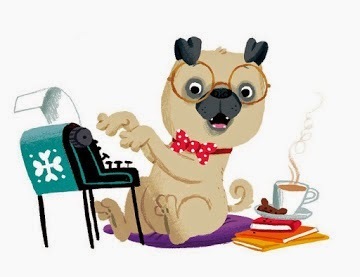 Thank you to this month's guest blogger,
Thank you to this month's guest blogger,
Emma O'Donovan,
who may be found at
The Book Sniffer

As we bound head long into a new and magnificent golden age of illustrated picture books, I feel it’s time to take a moment to reflect on the role of challenging and controversial picture books in a world in which children are increasingly exposed to sensitive information. From the dark depths of Grimm’s fairy tales to an egg-laying mummy, dogs' bottoms, ‘boobs’, and the grim reaper, it seems there are few restrictions in terms of what is deemed acceptable content for the very youngest of readers
 Duck, Death and the Tulip by Wolf Erlbruch Historically the picture books available to young readers were thoroughly smattered with terrifying bone chilling characters (the mere mention of Struwwelpeter strikes fear into the hearts of many adults I know). Back then they were actively used by parents as a tool to instill good manners, etiquette and a good moral standing in the young. Although perhaps some of the methods depicted in Struwwelpeter were slightly harsh.
Duck, Death and the Tulip by Wolf Erlbruch Historically the picture books available to young readers were thoroughly smattered with terrifying bone chilling characters (the mere mention of Struwwelpeter strikes fear into the hearts of many adults I know). Back then they were actively used by parents as a tool to instill good manners, etiquette and a good moral standing in the young. Although perhaps some of the methods depicted in Struwwelpeter were slightly harsh. Image from Struwweelpeter
Image from StruwweelpeterIt is probably fair to say that as a general rule, in anticipation of the impact on international sales, publishers tend to avoid content which may be considered controversial. It is well documented that tolerance for challenging picture books appears to be extremely risky, particularly so in the US markets. With the picture book market beginning to flourish again perhaps now is the perfect time for publishers to create interesting and challenging picture books; for parents to trust with complete confidence the decisions made by the books creators; and for authors and illustrators to be given new freedom to experiment with new themes. It is certainly evident that picture books are becoming increasingly experimental in terms of design and the complexity of the stories within them.
 The Heart and the Bottle by Oliver Jeffers
The Heart and the Bottle by Oliver JeffersDuring a recent acceptance speech at the Greenaway Awards, Winner Jon Klassen reminisced about how his initial concept for This is Not My Hat was much darker than the one which was eventually published, dipping its toe into the dark and murky underworld of underwater gang culture, only to be rebuffed by his US publisher for being too dark. It turns out they created an award-winner so in this case perhaps it was a good call and after all it is a marvellous book and *spoiler alert* the hero still in fact dies at the end so it's not entirely sanitised and sugar coated.
 This Is Not My Hat by Jon Klassen
This Is Not My Hat by Jon KlassenIt seems to me that nowadays one of the best things about using picture books as an educational and emotional support mechanism is the propensity for readers to absorb information at their own pace whilst promoting further discussion. So often children are bombarded with information from all angles with no capacity for information filtration, but at least with a picture book they can relate an imagined scenario with their own and re-read to reinforce understanding.
It’s hard to believe that one of the most recent pioneers, legendary Babette Cole, created her magnificent picture books over 30 years ago! Babette illustrated books with confidence, engaging storytelling and side splitting comedy incorporating gender equality, sex education, puberty, death and same sex marriage in the most charming of ways, with a great majority of readers not even realising they were what are referred to as ‘issue driven’. Surely that magical picture book recipe can be replicated and re-invented.
 Mummy Never Told Me by Babette Cole
Mummy Never Told Me by Babette ColeI wonder if exploring challenging subjects that are enveloped in a safe and familiar picture book (probably shared with a grown-up you are very fond of) is actually the best place to do so.; and there we have yet another reason why pictures books are an invaluable and essential first step in the development of the next generation of marvellous book loving adults.
I’d love to hear what you thinkShould picture books remain a sacred space for the pure innocent enjoyment of story and escapism and imagination? Who holds responsibility for what our children are exposed to? Which books have tackled challenging issues unsuccessfully? Should books tackling ‘issues’ proactively advertise their content on the cover for added parental reassurance? Does humour play an important role in broaching certain subjects with young readers?It'll be great to discuss this further in the comments section below or on ‘The Twitter’ (please tweet me @maybeswabey with your thoughts #challengingpicturebooks).
Finally, some recommendationsIn my previous incarnation as a children’s bookseller, I regularly recommended trusted classics to broach difficult subjects. There really is a wealth of brilliant picture books, covering all manner of subjects from dementia to late breast feeding and divorce. Here are some which I would confidently recommend (and a few suggestions from my dear knowledgeable friends on Twitter).
DivorceMum and Dad Glueby Kes Grey & Lee WildishDeathDuck Death and the Tulip by Wolf Erlbruch Grandpa by John BurninghamThe Heart and the Bottle by Oliver Jeffers Maia and What Matters by Tine Mortier & Kaatje VermeireSad Book by Michael Rosen & Quentin Blake DementiaGrandma by Jessica Sheperd Really and Truly by Emilie Rivard & Anne-Claire DelisleOther / Bottoms The Great Dog Bottom Swap by Peter Bently & May MatsuokaPhilosophyThe Yes by Sarah Bee & Satoshi Kitamura Elmer and the Big Bird by David McKee BullyingLeave me Alone by Kes Gray & Lee Wildish Is it Because? by Tony Ross Marmaduke the Very Different Dragon by Rachel Valentine & Ed Eaves Ant and the Big Bad Bully Goat by Andrew Fusek Peters & Anna Wadham Don’t Laugh At Me by Steve SeskinTrouble at the Dinosaur Cafe by Brian Moses & Garry Parsons
____________________________________________________________________
 Thank you to this month's guest blogger,
Thank you to this month's guest blogger,Emma O'Donovan,
who may be found at
The Book Sniffer
Published on July 24, 2014 00:00



